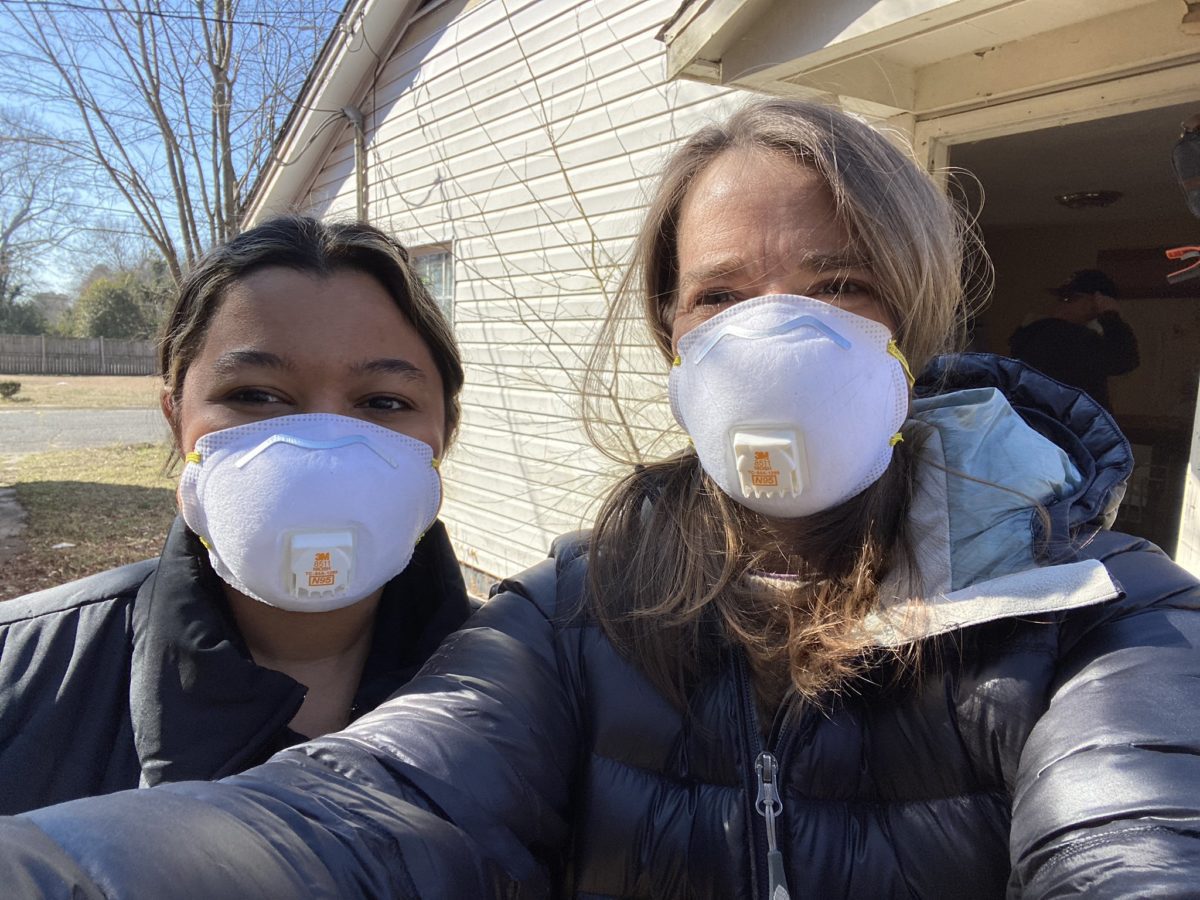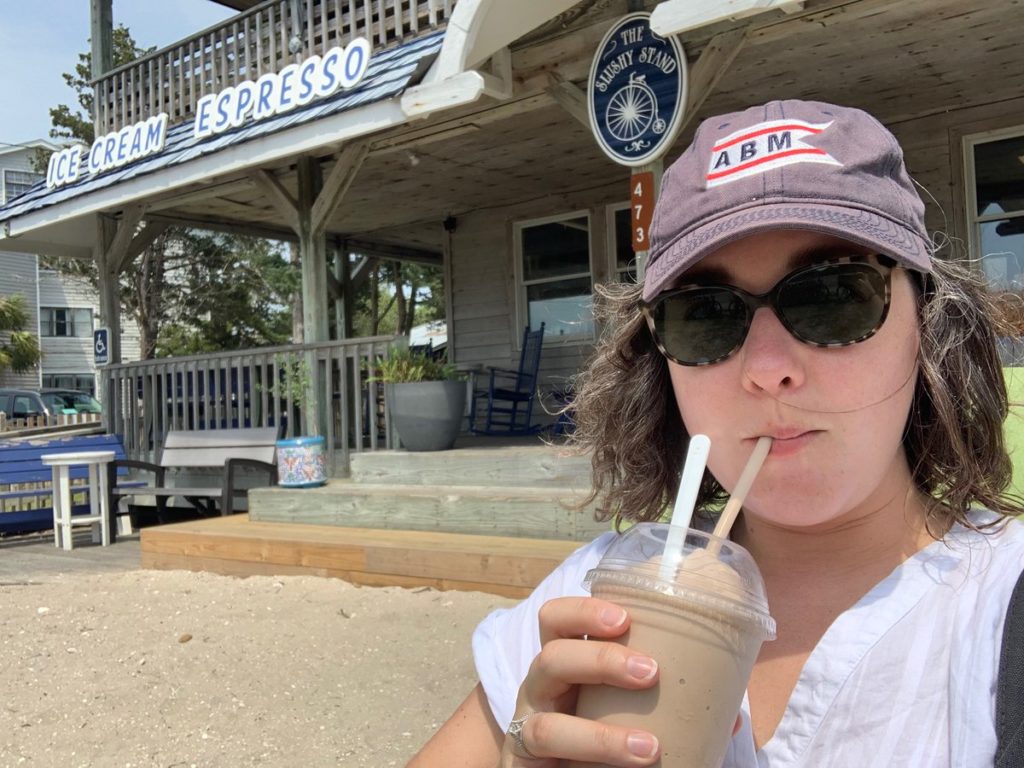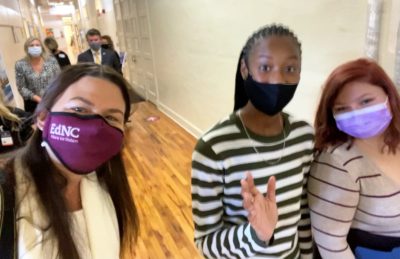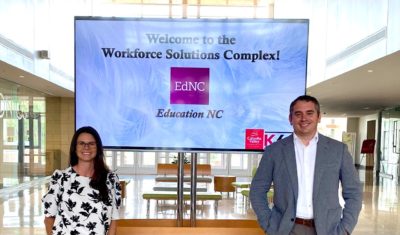
EdNC officially kicked off our journey to visit all 100 counties and deepen our connections across the entire state last year. Since that time, we’ve already been to 86 counties.
North Carolina, we have made some memories.
Cheyenne McNeill, one of our newest team members and regional reporter, had planned a visit to Robeson Community College and called President Melissa Singler beforehand. It turns out that Singler was from Cheyenne’s grandmother’s hometown and knew a lot of her family members.
Katie Dukes, a member of our early childhood team, was exploring Camden County on a scorching day when she found a little park by the Pasquotank River. A 12-year-old was swimming with her family and invited Katie to join, and that’s where she learned the most on her visit.
Caroline Parker, our director of rural storytelling, was able to share space with Hayesville High School students who were remembering their beloved band teacher after she passed away. She was able to be there while the students kept the program going.
Hannah McClellan on our community college team met recent trucking graduates at Johnston Community College and was able to see first-hand how these students, who had recently left the military or switched jobs, were able to access real opportunities.

These are just some of the stories you’re sharing with us – stories about the role education plays in your lives and your communities. All these stories are helping us learn how we can better serve you and your needs.
The last year
We started this 100 county work because we wanted to broaden and deepen our reach across the entire state. We needed to understand how North Carolinians get their information, how that information travels through the community, and what they are seeking information about. That way, we could know how to fill gaps and make sure our content gets in front of people who need it.
Phase one was information collection. We put together spreadsheets – too many to count – with information about each of our 100 counties and their racial and economic demographics, who our sources are, and what we’ve published about them in the past. We also shared a survey with our audience in fall 2021 and got almost 900 responses from people telling us where they get their news and what they want to read about.
Once we had this foundation, we hit the road. We traveled to 86 counties between July 2021 and July 2022 to have in-depth conversations with people about how we can better meet them where they are, both with what we cover and how we share it. We spoke to business owners, school employees, longtime residents, folks who had just moved to the area, and more.
We learned that some communities have a strong local newspaper they rely on. Others use different traditional news sources like TV and radio. Others live in traditional news deserts, where they instead turn to strong Facebook communities or other social media to keep up with what’s going on. Others rely on seeing community members in person, whether that’s at church or a school board meeting.
The vast majority of people rely on a combination of these different sources, and take to social media and word of mouth to share what they learn. We heard similar variation when it came to what people are searching for and what they want to read about: equity in schools, the connection between education and economic development, school funding, access to broadband, politics in schools, and more.
With all this information in mind, we made one-pagers for our team members. These fact sheets have what we know about the counties so far (along with recommendations for what to eat and where to stay) so our team members can familiarize themselves before they travel.
That way, we’re not only passing down institutional knowledge through our organization, but we have the opportunity to go deeper with you when we’re on the road – we’re not starting at square one each time.
Next steps
But the work must continue – there are places we still have to visit, and deeper relationships to build.
A new school year is starting for North Carolina’s public schools and community colleges. In this next phase of our 100 county work, we are going to visit every single community college across the state over the span of three months.
As we travel, we’re seeking to learn about the role community colleges play in their local economies. But more than that, we’re hoping to use this time on the ground to further understand what your needs are and how EdNC can fit in.
We are also focusing on what it means for our team to keep track of what’s going on in all 100 counties – what we call “keeping a pulse.” Going forward, we’ll have eight team members keeping a pulse on eight regions that correspond with DPI’s education regions.
These folks will take time each week to catch up on the events and news for those communities and report back to EdNC team leadership. From there, we’ll decide what and how to cover.
What we’ve learned so far is already shaping our content. This week, we’re rolling out different iterations what this looks like. You’ll see travel diaries from Katie Dukes about her time in the northeastern part of the state. You’ll see poetry from Derick Lee about his travels in the mountains. And now and in the future, you’ll continue to see deeply reported local stories about the issues you told us matter to you.
The story of public education happens at the local level. We need your help to tell these stories. Tell us about how we can serve your community. You can find us online, on social media, and in-person during our travels.
Recommended reading



